Bookkeep Managed Cost of Goods Sold
To keep an accurate Cost of Goods Sold (COGS) in your accounting system, you need to track various aspects of your inventory, including initial purchase costs, additional costs associated with getting products ready for sale, and the costs as inventory is sold.
For some businesses, an inventory management system is required due to the complexity and changing nature of product costs. In these cases, you can use an inventory management system that integrates with your accounting software to automatically update inventory levels when items are sold. This reduces human error and keeps your COGS up-to-date.
However, for some businesses, an inventory management system is unnecessary as the product costs may change infrequently. As a result, Bookkeep offers a helpful tool for these businesses to track COGS in their accounting platform.
This user managed cost tool is offered for the following apps:
- Shopify
- Shopify already has a product cost stored in their system. However, Shopify only provides the latest cost of an item and does not share historical costs making this tool beneficial.
- Amazon
- Amazon does not store any cost in their system which is why this feature benefits businesses.
- For Amazon, Bookkeep leverages the SellerSKU field when available or else the ASIN number to populate the SKU field in Bookkeep.
To obtain the most value from this Bookkeep COGS feature, it does require updating product/variant costs as your costs change to ensure an accurate COGS entry in your accounting system. One key benefit of this feature is that it will not post to your accounting system until all costs have been entered.
How Bookkeep’s COGS feature works
If you would like to utilize the Bookkeep COGS feature for the supported apps mentioned above, visit the Connections > My apps page and select Configure (shown in the bottom right below) for the app connection that you would like to enable.

On this settings page, you will see a COGS - Default currency menu. This menu allows you to choose the currency for which you will enter costs e.g. if you plan to enter costs in USD, choose USD. Once you select a currency, the Customer managed product costs toggle (as shown below) at the bottom will be visible for you to enable. After doing both, you will then click Save. Once you click save, the products will begin importing from your connected app and the Products tab on the left navigation will be visible upon refresh.
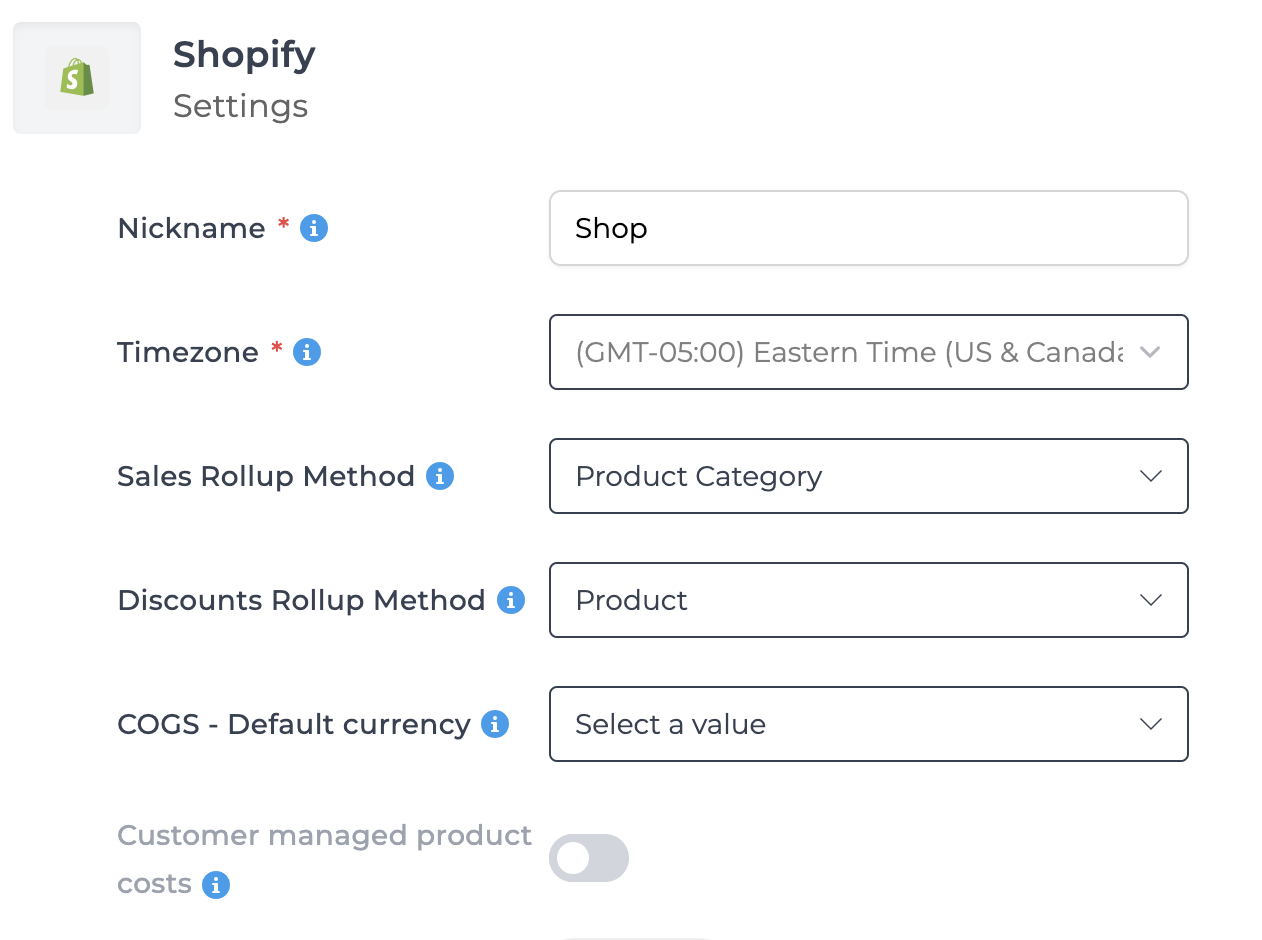
Once you select a default COGS currency and save your settings, you will see that the COGS - Default currency menu is unable to be changed as shown below. This is intentional as changing the currency can result in duplicates in your accounting platform. Please contact support if you need the default COGS currency to be changed.
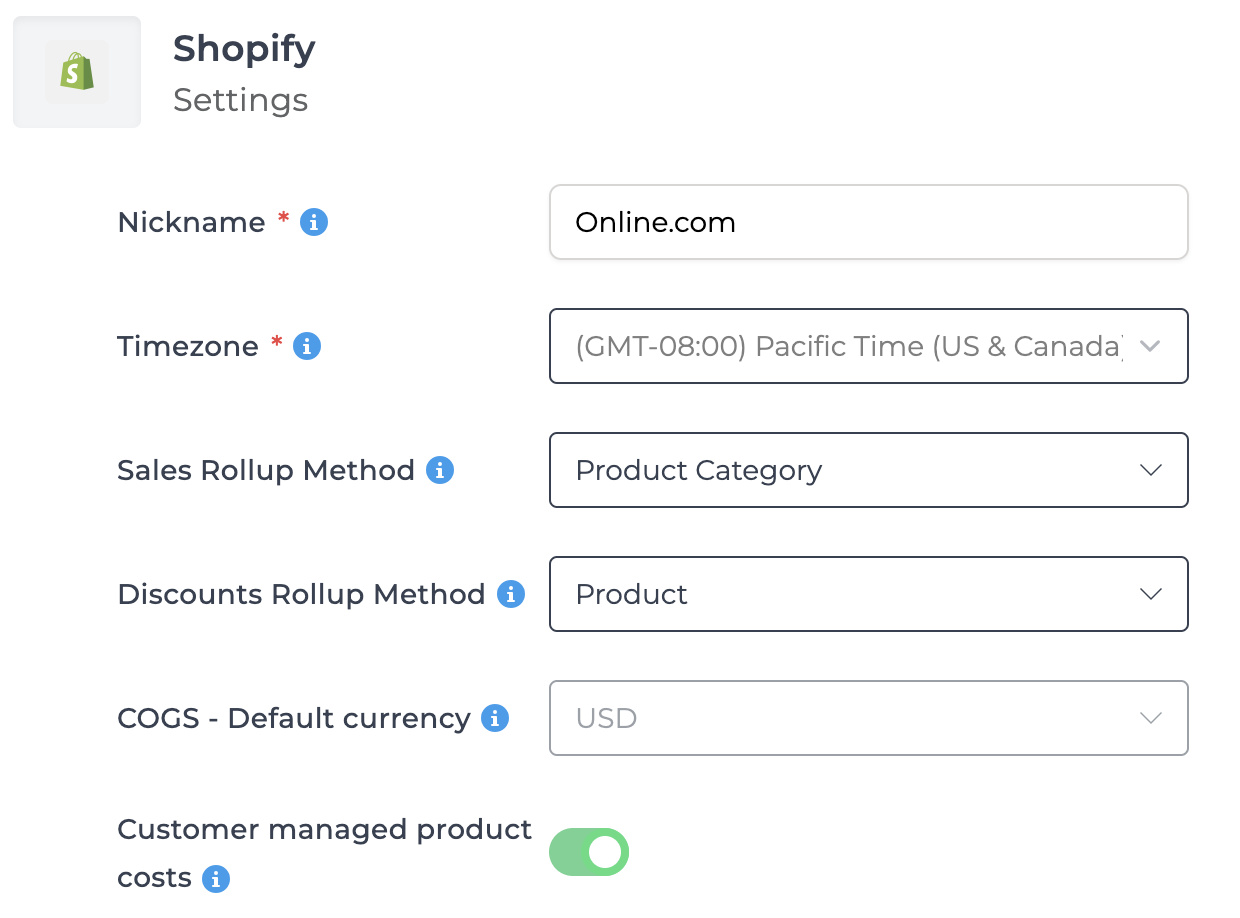
Once activated, you will see a Products tab in your left navigation as shown below:
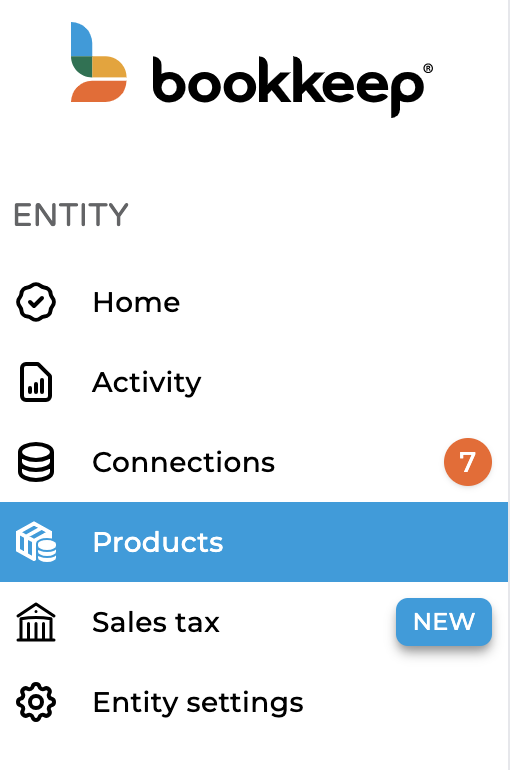
Bookkeep will begin importing your recently sold products and variants which will allow you to begin entering costs for each variant in your Products View.
Product versus Variant
In inventory management, products and variants refer to different levels of items being tracked, with each having a distinct role in organizing and managing stock. Here’s the difference between the two:
Product
- A product is the main item or parent SKU (stock keeping unit) that a business sells. It represents a specific item that customers would generally recognize by a single name or description.
- Products are often defined by their general features, such as item type, brand, or primary function.
- Examples of a product:
- A “T-shirt” offered by a clothing brand.
- A “Smartphone” from a specific manufacturer.
- In inventory systems, products are typically broad categories without specific distinguishing attributes like size, color, or material.
Variant
- A variant is a specific version of a product that differs in one or more attributes (e.g., size, color, material). Variants allow you to manage different forms of the same product within the inventory.
- Each variant usually has its own unique SKU and inventory count, enabling precise tracking for each version.
- Examples of variants:
- A “T-shirt” product could have variants in size (Small, Medium, Large) and color (Red, Blue, Black).
- A “Smartphone” product could have variants in storage capacity (64GB, 128GB) and color (Silver, Black).
Inventory Implications of Products vs. Variants
- Sales Reporting: Products and their variants help in tracking sales data granularly, allowing businesses to see which specific sizes, colors, or styles are in demand.
- Cost Tracking: Variants may have different costs (e.g., larger sizes may cost more), so accurate COGS calculations often depend on tracking each variant individually.
Products View in Bookkeep
The Products view is the central spot in Bookkeep to view your products/variants as well as update the cost for each. By default, the products view loads all variants for a specific app connection (e.g. all variants for your Amazon USA connection). You can select the app connection you would like to review in the top left below (below it is filtered to an Amazon connection)

Bookkeep allows you to easily filter to variants without a cost by toggling “No Cost” and then clicking “Apply.” This will display all variants without a cost:

You will notice above when the “No Cost” toggle is activated, a from and to date field are available. This is helpful since Bookkeep will not post a COGS entry to your accounting system when costs are missing for any variants. You will see an error message next to a failed COGS entry in the activity view when any costs are missing. For example, the entry below is missing costs for five variants:
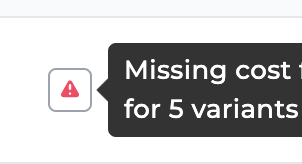
When filtering in the Products view for this specific day for items with no cost, it will show only the five variants missing a cost as shown below. This allows you to quickly update the missing costs and then post the COGS entry to your accounting platform.
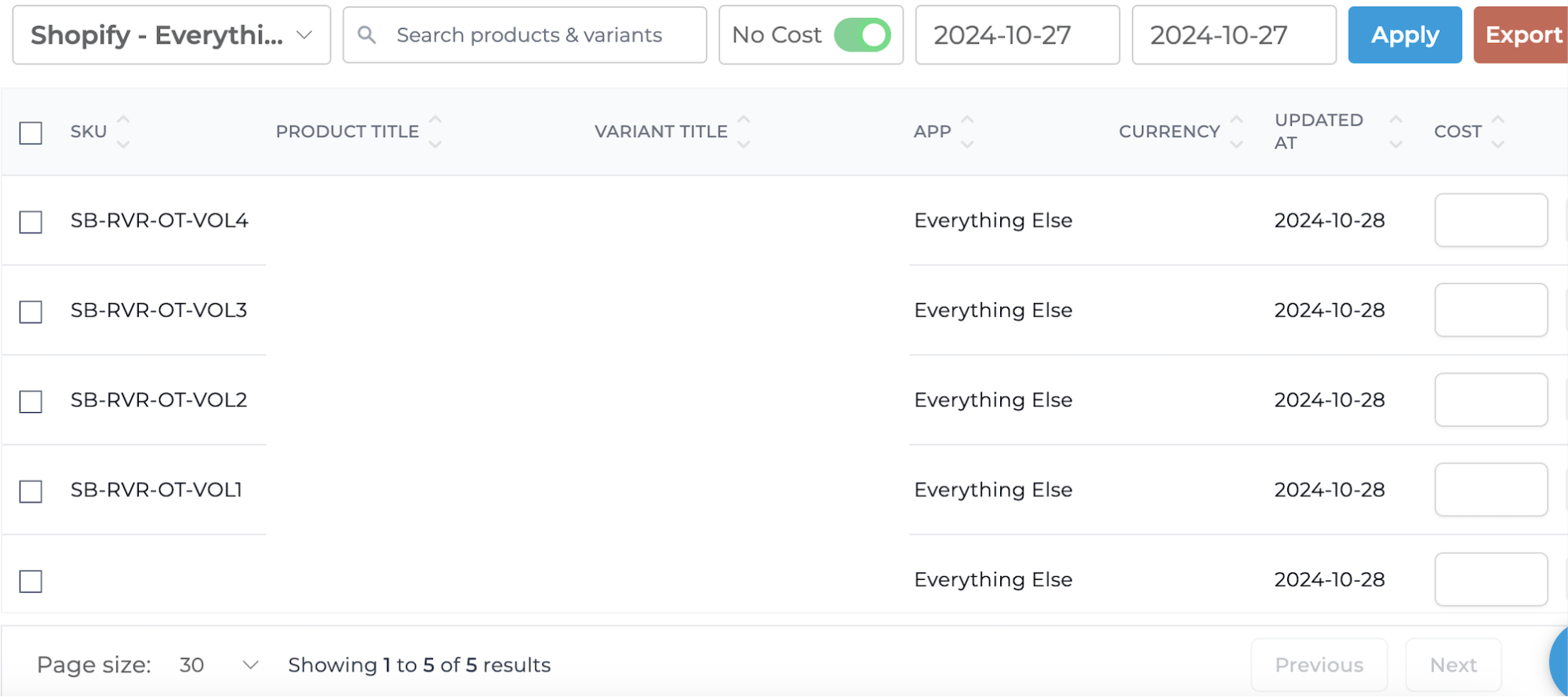
Bulk Update Multiple Variants
In the image above, five variants are shown without a cost. It is possible that all 5 variants are part of the same parent product, and therefore have the same cost. If you select the left checkboxes in each row, a yellow Update button will appear allowing you to bulk update the selected variants:

Upon clicking Update, a modal will appear with the selected variants:
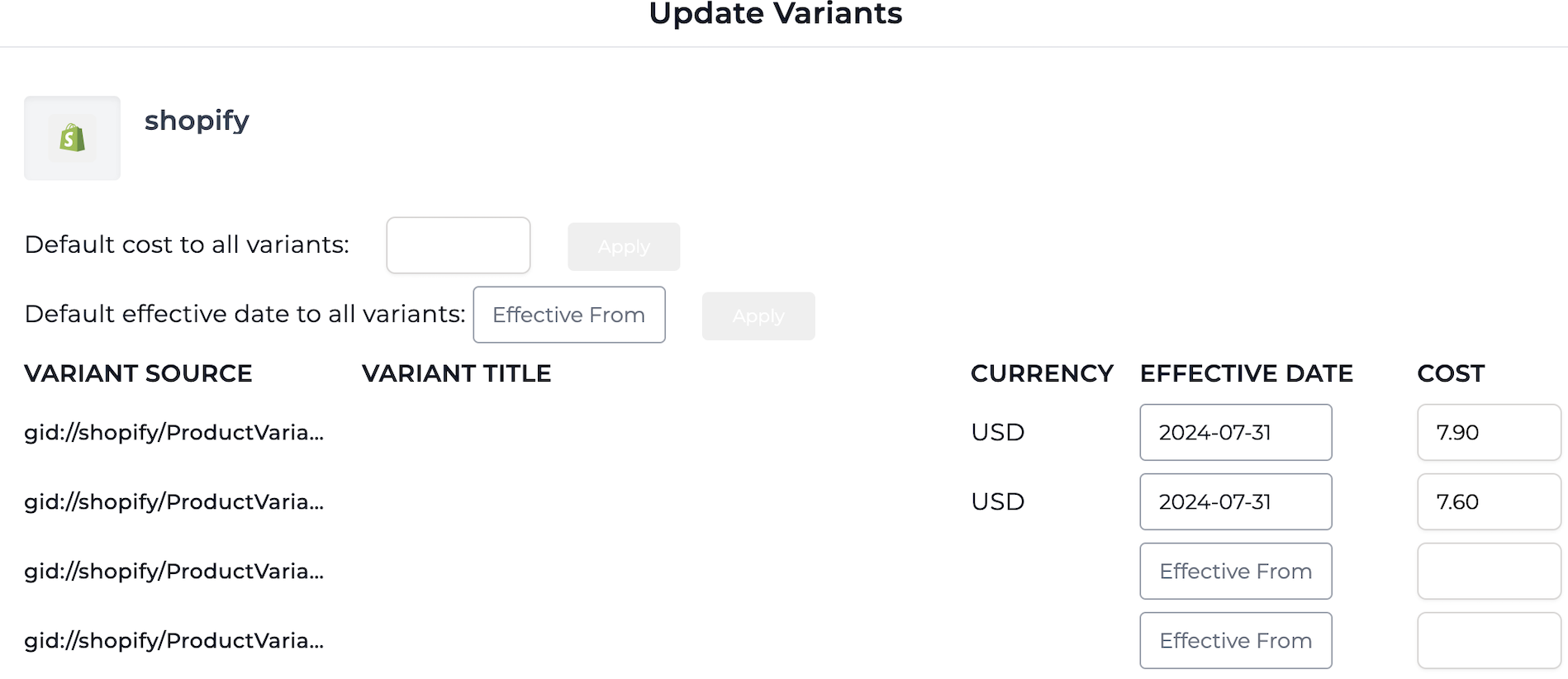
This bulk update modal offers a few benefits:
- You can apply the same cost to each of the listed variants using the “default cost to all variants” field at the top.
- This modal offers an effective date input per variant. This effective date is very helpful if you know on a specific date that the cost of a variant will change. This is exactly what the effective date is used for.
- For example, if the effective date is 11/1/2024, the new cost input will be used beginning on 11/1/2024. On dates prior to 11/1/2024, the older cost will be leveraged for this particular variant.
- The modal allows you to apply the same effective date to each variant listed using the “default effective date to all variants” input at the top.
Cost of Goods Sold Chart of Account Mapping
Once you have activated the COGS feature you will see the COGS mapping available in the Connections > My apps view as shown below (below Amazon COGS is displayed):

Like all journal entries offered by Bookkeep, you will need to complete the Chart of Account mapping using the “Map” button above before these COGS entries will be posted to your accounting system on a daily basis. If the entry is not mapped, the entries will fail to post to accounting.
Daily COGS Automation
Bookkeep will pull the quantities of each variant sold and returned for the supported apps above and generate a summarized COGS journal entry per currency using the costs you provided in the Products view:
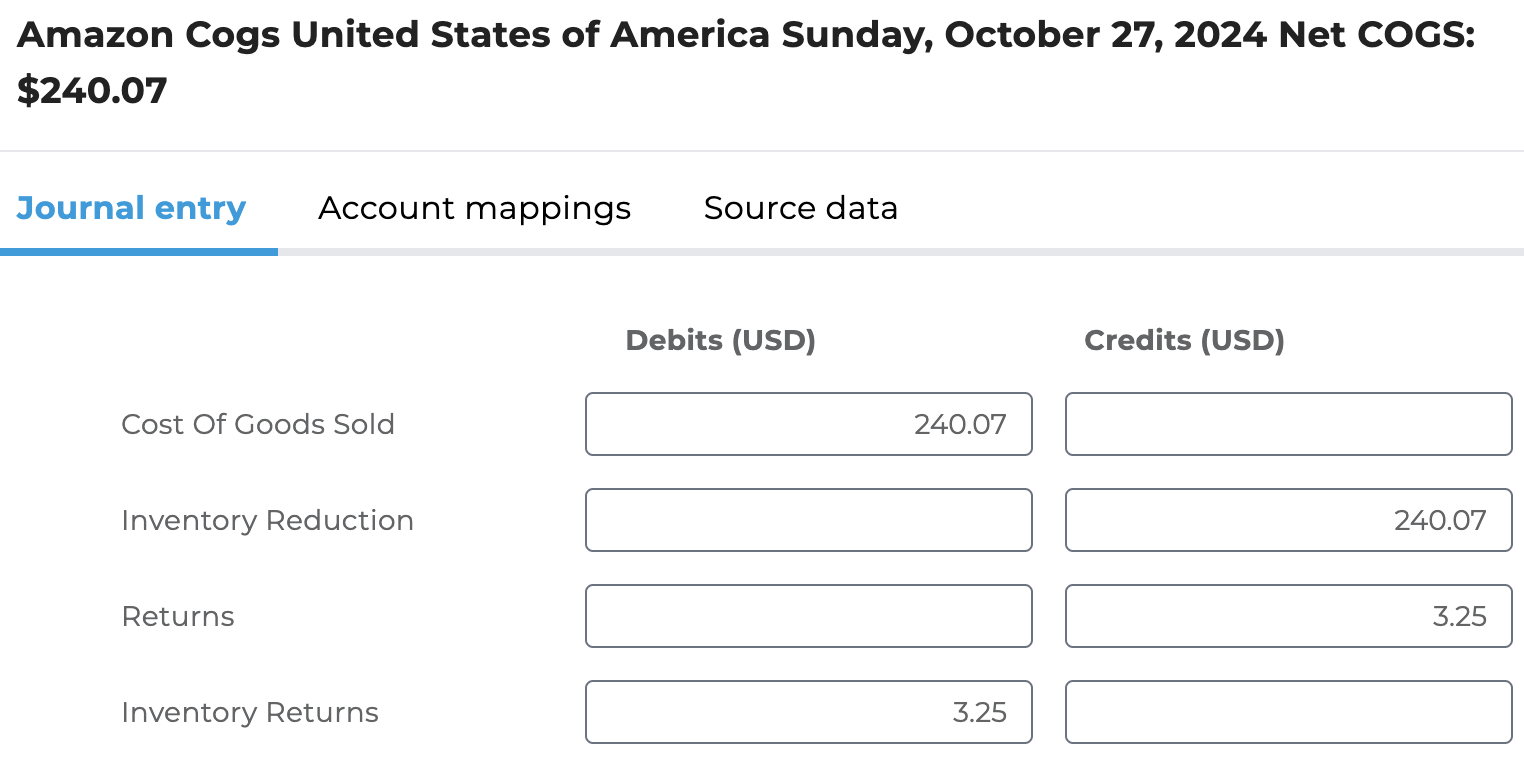
If all variants have a cost and each line is mapped, the journal entry will post automatically to your accounting platform. However, if a line is not mapped or any costs are missing for the variants sold or returned for a particular date, the journal entry will fail.
By maintaining precise records and following these steps, your COGS calculations will accurately reflect the real expenses associated with your products, giving you reliable profitability data for financial reporting and analysis.
If you have any questions on using Bookkeep’s COGS feature, please contact [email protected].